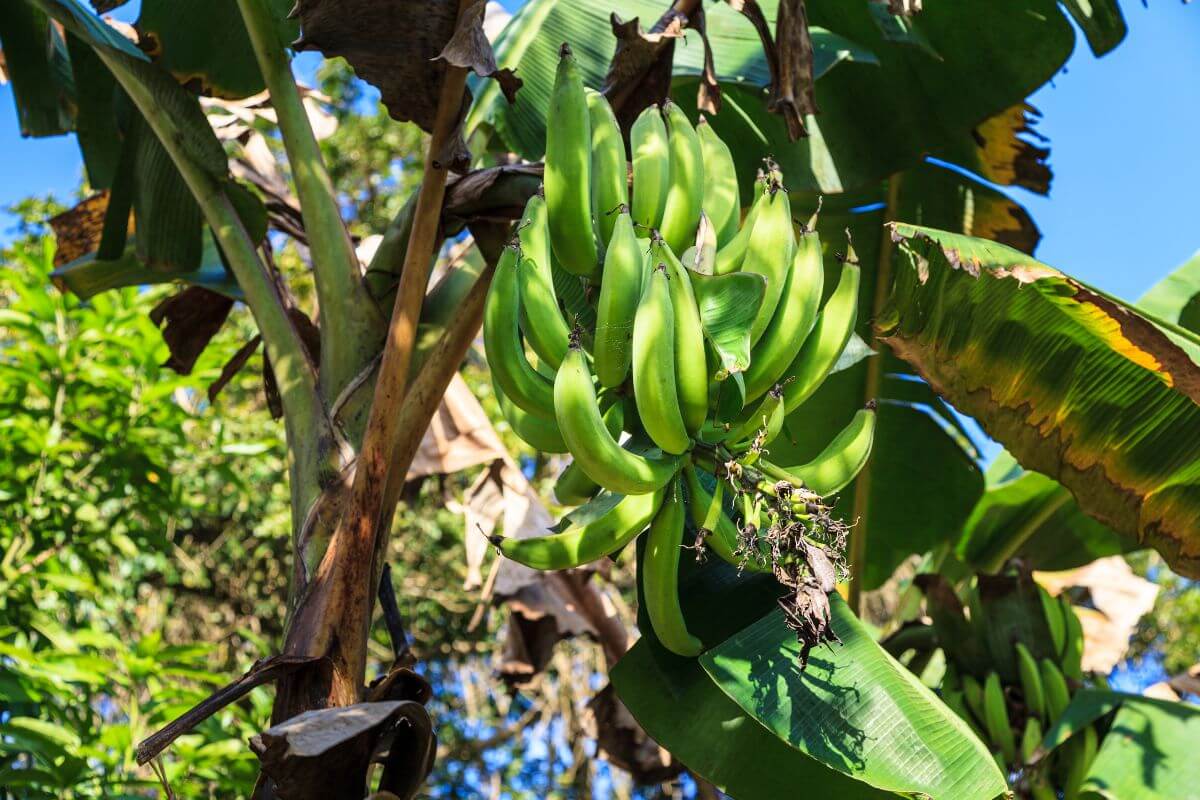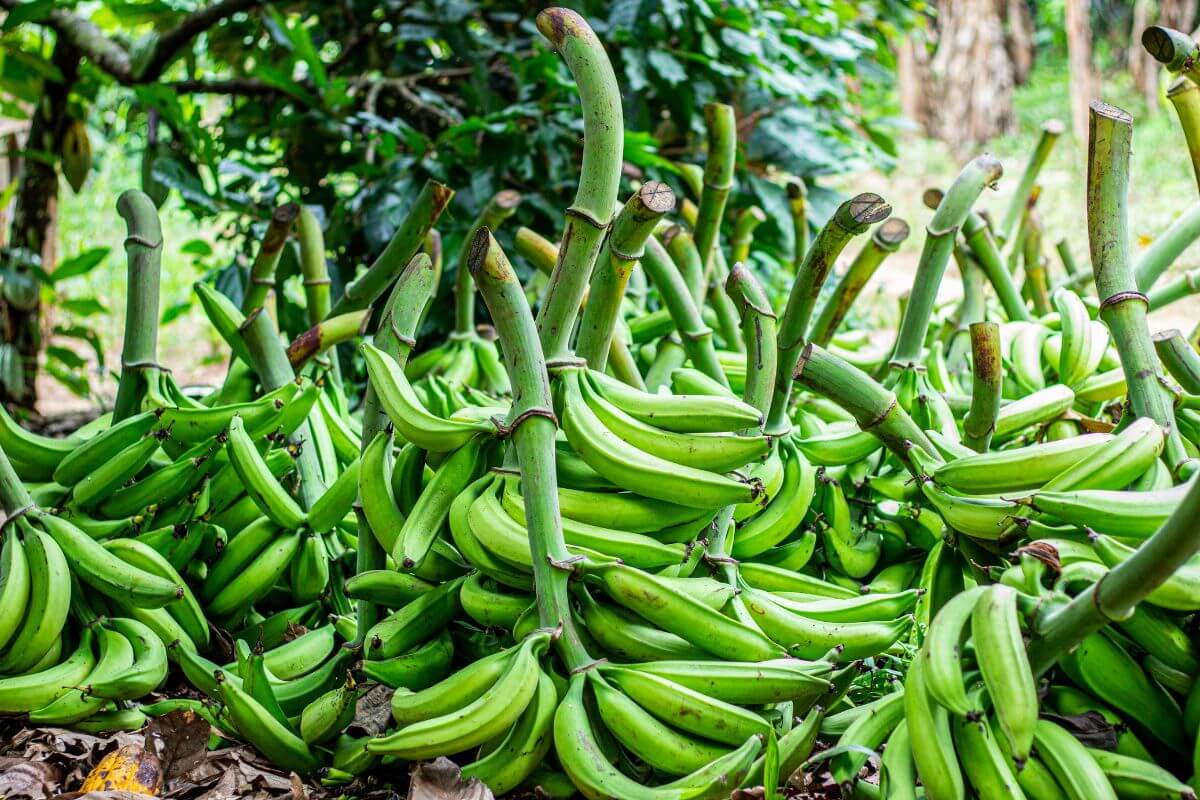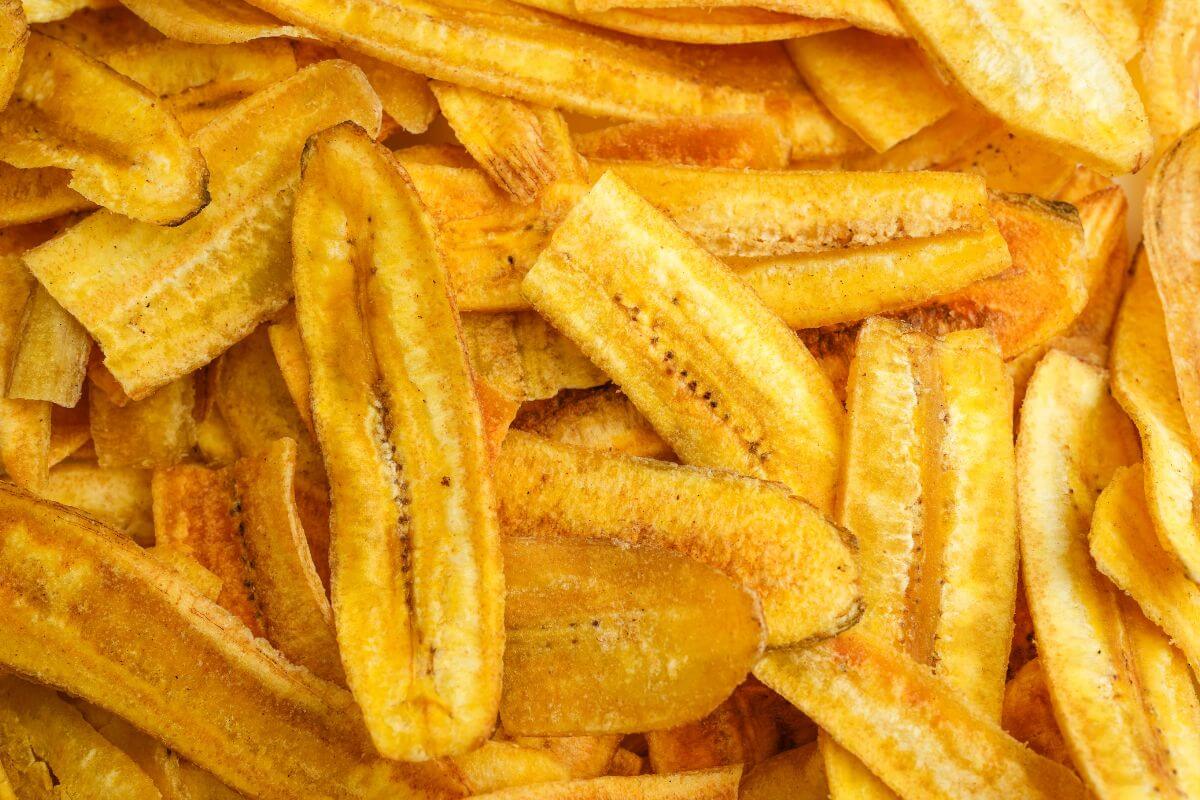Are plantains fruits, or are they vegetables? It’s a question that might puzzle you because plantains are often cooked like vegetables, yet they share similarities with bananas. Understanding whether plantains are a fruit or vegetable can change how you use them in your meals.
This guide will explore the dual nature of plantains. I’ll dive into why they’re scientifically classified as fruits, yet often treated as vegetables in the kitchen. You’ll learn about their nutritional benefits and discover how their culinary uses vary across different cultures.
Curious about how to incorporate plantains into your diet? Keep reading to find out the best ways to enjoy this versatile food and unlock its full potential in your cooking.
- Related article: Fruit & Vegetable Comparison
5 Key Takeaways on Is Plantain a Fruit or Vegetable
- Plantains belong to the banana family but we often cook them like vegetables because they are starchy.
- Unlike sweet bananas, plantains need cooking before eating. Cultures worldwide use them in savory dishes.
- They pack a punch with nutrients. Plantains are rich in carbohydrates, fiber, potassium, and vitamins B6 and C. They are a healthy choice.
- As plantains ripen, they change. When unripe, they are starchy and firm. Ripe ones become sweet and soft.
- Originally from Southeast Asia, plantains are now a staple in tropical regions. You’ll find them in Africa, the Caribbean, and Latin America.
Is Plantain a Fruit or Vegetable?

Plantains are fruits, but we often treat them like vegetables. Here’s a quick rundown on how we classify them:
Plantains as Fruits
Plantains are often seen as vegetables in cooking, but they’re fruits. They’re part of the banana family, known scientifically as Musa. This means they grow from the plant’s flower and have seeds, just like other fruits.
When you look at plantains, you’ll notice they change color as they ripen. They start green, turn yellow, and can eventually become black. This process is similar to what happens with other fruits and it changes how they taste and feel.
Nutritionally, plantains are a powerhouse. They’re full of carbohydrates, especially starch, and packed with vitamins and minerals. This makes them a great fruit for adding energy and nutrients to your diet.
Plantains as Vegetables
Plantains are often seen as vegetables in cooking. This is because they are starchy and usually cooked before eating. This is different from sweet bananas, which we eat raw.
We prepare plantains in ways similar to potatoes. We can boil, fry, or bake them. They fit perfectly into savory meals. You’ll find plantains in many dishes across Africa, the Caribbean, and Latin America.
When plantains are unripe, they taste bland and starchy, like potatoes. This makes them great for savory dishes, but not so much for sweet ones.
What Is a Plantain and Where Does It Come From?

Plantains are a special kind of banana. They are starchy and we usually cook them instead of eating them raw. They’re bigger and have thicker skins than the sweet bananas you might eat as a snack. People often fry, boil, or bake plantains. In many tropical places, they’re a key part of the diet.
Where do plantains come from? They likely started in Southeast Asia, in areas that are now part of India and Indonesia. They made their way to Africa and the Americas through trade and exploration. Now, plantains grow in tropical climates all over the world and make up a big part of banana farming.
Differences Between Plantains and Bananas

Bananas and plantains might look similar, but they have some key differences. Let’s dive into what makes each one unique.
| Aspect | Bananas | Plantains |
|---|---|---|
| Origin | Grown globally, with India and China as top producers | Thrive mainly in equatorial regions of Africa and the Americas |
| Size & Skin Thickness | Smaller, with thinner skin | Bigger, tougher skin |
| Ripeness | Green when unripe, yellow when ripe | Green when unripe, yellow or brown when ripe |
| Taste (Ripe) | Sweet, creamy, soft | Sweet, but the taste changes from mild and starchy (unripe) to sweet (ripe) |
| Texture | Soft when ripe | Firm when unripe, softer when ripe |
| Culinary Uses | Eaten raw, used in sweet dishes like breakfast, baked goods, and desserts | Versatile; used in sweet and savory dishes, often treated like vegetables in Caribbean, Latin American, and African cooking |
| Nutritional Value | Contains fiber, potassium, and vitamin B6 | It is richer in carbs and calories and contains fiber, potassium, and vitamin B6 |
In short, while bananas and plantains share some similarities, their differences in origin, taste, culinary uses, and nutrition make each one special. Whether you prefer the sweet, soft bite of a banana or the versatile, hearty nature of a plantain, both are delicious additions to your diet.
- Read more: Is Banana a Fruit or Vegetable?
What Are the Health Benefits of Plantains?
Plantains are not just tasty, they’re also packed with nutrients that bring lots of health benefits. Let’s dive into why adding plantains to your diet is a smart move:
- Digestion Made Easy – Plantains are full of dietary fiber, which is great for keeping your digestion on track. The resistant starch in green plantains acts like food for the good bacteria in your gut, helping them grow.
- Keeping Blood Sugar Steady – If you’re watching your blood sugar, plantains are a good pick. They have a low glycemic index, meaning they digest slowly and help keep your blood sugar levels stable.
- Good for Your Heart – With lots of potassium, plantains help manage your blood pressure and lower the chance of heart disease. Potassium helps balance out sodium, which can keep hypertension at bay.
- Boost Your Immune System – Plantains are rich in vitamin C, vitamin B6, and magnesium. These nutrients are key for a strong immune system and overall health. Vitamin C also helps fight off oxidative stress.
- Packed With Nutrients – Beyond potassium, plantains offer vitamin A, vitamin K, and iron. These are important for things like seeing well, blood clotting, and carrying oxygen in your blood.
- Help With Weight Control – The fiber in plantains can make you feel full, which might help you eat less overall.
- Fight Free Radicals – The antioxidants in plantains help fight off free radicals, which might lower your risk of chronic diseases.
Adding plantains to your meals can be a delicious way to enjoy these health benefits. Whether you eat them green or ripe, your body will thank you.
Different Ways to Add Plantains to Your Diet
Here are several ways to enjoy adding plantains to my meals:
- Fried Plantains – Slice ripe plantains and fry them until they’re caramelized. They turn out sweet and make a great side dish or snack, especially alongside savory dishes like chicken or pork.
- Plantain Chips – For a crunchy snack, slice green plantains thinly and either bake or fry them. They’re perfect with dips like guacamole or salsa.
- Stuffed Plantains – Halving ripe plantains and stuffing them with black beans and cheese makes for a delicious and nutritious meal or snack.
- Plantain Mash (Mangú) – This is a breakfast staple. Boiling and mashing green plantains, you can serve them with pickled onions and avocado for a tasty start to the day.
- Tostones – These twice-fried green plantains are a must-try. I slice, fry, flatten, and fry them again for a crispy, savory treat.
- Plantain Frittata – Adding sliced plantains to an omelet or frittata, along with veggies and protein, creates a hearty and satisfying meal.
- Soups and Stews – You can use green plantains in soups, especially with leafy greens for a nutritious dish.
- Plantain Cups – Fried plantain slices make excellent cups for ceviche, adding a unique twist to this appetizer.
- Mofongo – This Puerto Rican dish is a favorite of mine. It’s made from mashed fried green plantains with garlic and served with shrimp or pork.
- Sweet Plantain Dessert – Baking ripe black plantains with a sprinkle of cinnamon turns them into a delightful dessert, especially when paired with ice cream.
These different ways to this tropical fruit highlight its versatility, letting me enjoy them in various forms throughout the day.
Is Plantain a Fruit or Vegetable Final Thoughts
Plantains might surprise you. They’re fruits, but we often treat them like vegetables because they’re so starchy. You can boil, fry, or bake them, and they fit right into meals all over the world.
These tropical favorites are packed with nutrients and work well in both sweet and savory dishes. Knowing that plantains are both fruits and veggies makes them even more interesting. They’re a great addition to any meal, adding a unique taste and texture.
Is Plantain a Fruit or Vegetable FAQs
1. Why Is a Plantain a Vegetable?
Plantains are considered vegetables in cooking because of their starchy quality and the fact that they’re usually cooked before eating.
2. Why Is Plantain Considered a Fruit?
Plantains are fruits botanically because they grow from the flower of a plant and contain seeds.
3. Are Plantains Healthier Than Bananas?
Plantains pack a punch with their nutrient-rich starch. If you cook them right, you can enjoy more plantains than bananas in one go. They often feature in savory dishes. Bananas, on the other hand, usually end up in sugary recipes. This makes plantains a healthier choice overall.
For more edible plants and their classification as a fruit or vegetable, check out these articles:


